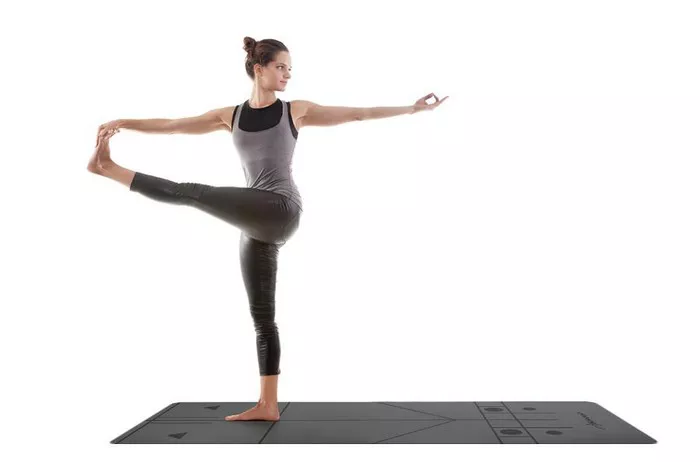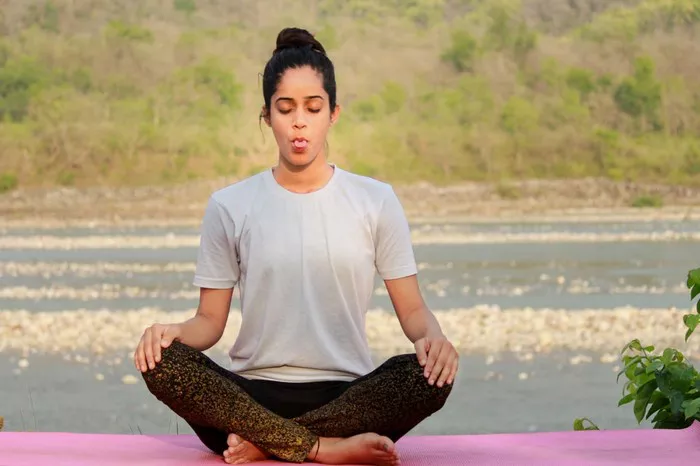Daily Ashtanga yoga is a holistic workout that engages multiple muscle groups simultaneously. As you move through the series of postures, or asanas, you’ll notice a gradual increase in physical strength. The primary series of Ashtanga focuses on forward folds, backbends, twists, and inversions, all of which require you to support your body weight in various ways. This constant engagement builds muscular endurance, especially in the core, arms, and legs.
The Body’s Alchemy: Forging Strength and Flexibility with Every Practice
Daily Ashtanga yoga acts as a sculptor, chiseling away at the body to create a masterpiece of strength and flexibility. The sequence of asanas engages multiple muscle groups, transforming the body from the inside out.
Muscular Endurance: The primary series of Ashtanga, with its array of forward folds, backbends, twists, and inversions, demands that you support your body weight in diverse postures. This constant engagement builds endurance, particularly in the core, arms, and legs. For instance, poses like Chaturanga Dandasana strengthen the arms and shoulders, while poses such as Navasana work the core muscles intensively.
Flexibility Enhancement: The repetitive nature of the Ashtanga sequence facilitates flexibility gains. Each pose incorporates dynamic stretching, gradually lengthening the muscles and tendons over time. Forward folds gently stretch the hamstrings, and backbends open up the chest and shoulders, leading to a more supple and balanced physique.
Breathwork Revolution: Synchronizing Life Force with Movement
Central to Ashtanga yoga is the practice of Ujjayi breath, a rhythmic, deep breathing technique. When you practice Ashtanga daily, you learn to synchronize this breath with each movement. This synchronization is not just a mechanical connection; it creates a flow that guides your practice. The Ujjayi breath warms up the body from within, increasing blood circulation and oxygen supply to the muscles.
As you become more proficient in this breathwork, you’ll find that it calms the mind. The steady inhalation and exhalation act as an anchor, drawing your attention away from distractions and into the present moment. This focused breathing also helps to regulate the nervous system, reducing stress and promoting a sense of relaxation even during physically demanding poses.
Mental Fortitude: Cultivating a Resilient Mindset
The discipline of practicing Ashtanga yoga every day requires dedication and perseverance. Each session presents its own set of physical and mental challenges. As you face difficult postures, instead of giving up, you learn to stay with the discomfort, observe your thoughts, and gradually overcome the mental barriers. This process strengthens your mental resolve and builds self-discipline.
Over time, this mental fortitude extends beyond the yoga mat. You’ll find yourself approaching other aspects of life with a more positive and determined attitude. The ability to stay calm under pressure and persevere through difficulties, which you develop during Ashtanga practice, becomes a valuable asset in daily life situations.
The Rhythmic Symphony: How Ujjayi Breath Guides Your Practice
At the heart of Ashtanga yoga lies the Ujjayi breath, a rhythmic and deep breathing technique that synchronizes with movement, creating a harmonious flow.
Internal Warmth and Circulation: As you practice Ashtanga daily, you learn to coordinate Ujjayi breath with each movement. This breath warms the body from within, enhancing blood circulation and oxygen delivery to the muscles. The gentle constriction of the throat during Ujjayi breath generates heat, preparing the body for the physical demands of the practice.
Mindful Focus: Proficiency in Ujjayi breathwork leads to a calmer mind. The steady inhalation and exhalation serve as an anchor, drawing your attention away from distractions and into the present moment. This focused breathing also helps regulate the nervous system, reducing stress and promoting relaxation even during challenging poses.
Mental Mettle: Cultivating Resilience Beyond the Yoga Mat
The discipline of daily Ashtanga practice instills mental fortitude and self-discipline, qualities that extend far beyond the yoga studio.
Overcoming Discomfort: Each Ashtanga session presents physical and mental challenges. Facing difficult postures requires you to stay with the discomfort, observe your thoughts, and gradually overcome mental barriers. This process strengthens mental resolve and builds self-discipline.
Positive Mindset: Over time, the mental resilience developed during Ashtanga practice translates into a more positive and determined attitude in all aspects of life. The ability to remain calm under pressure and persevere through difficulties becomes a valuable asset in daily life situations.
Postural Precision: Aligning the Body for Peak Performance
Ashtanga yoga emphasizes proper alignment in every asana, leading to improved posture and optimal body function.
Enhanced Body Awareness: Daily practice heightens your awareness of body alignment in both static and dynamic postures. Correct alignment ensures that weight is evenly distributed, reducing strain on joints and muscles. For example, in standing poses, proper alignment of the feet, knees, and hips promotes stability and efficiency.
Long-Term Postural Benefits: Improved alignment in Ashtanga practice has a positive impact on overall daily posture. Many practitioners notice a natural correction of slouching and other postural imbalances, enhancing physical appearance and reducing the risk of musculoskeletal issues.
Energy Awakening: Unlocking the Body’s Inner Vitality
Rooted in yogic philosophy, Ashtanga yoga is believed to work on the body’s subtle energy channels, or nadis, optimizing energy flow.
Clearing Energy Blockages: Daily Ashtanga practice is thought to clear blockages in the nadis, allowing the free flow of prana, the life force energy. As you move through the asanas and breathe deeply, you can feel a surge of increased energy and vitality.
Sustained Well-Being: This energy boost is not temporary. Regular practice helps balance the body’s energy systems, resulting in increased focus, concentration, and an overall sense of well-being throughout the day.
Digestive Dynamism: Nurturing Health from the Inside
The unique asanas in Ashtanga yoga play a vital role in enhancing digestive health.
Organ Massage: Twists in Ashtanga yoga gently massage the internal organs, including the digestive tract. This massage stimulates digestive enzymes, improving the digestion process.
Toxin Elimination: Forward folds compress the abdominal area, aiding in the elimination of toxins from the digestive system. Daily practice can lead to better digestion, reduced bloating, and improved nutrient absorption.
Conclusion
In conclusion, practicing Ashtanga yoga every day is a transformative journey that enriches every aspect of your life. From physical strength and flexibility to mental resilience, from optimal energy flow to enhanced digestive health, the benefits are far-reaching. By making Ashtanga a daily ritual, you embark on a path to a healthier, more balanced, and fulfilling life, where mind, body, and spirit exist in perfect harmony.

















